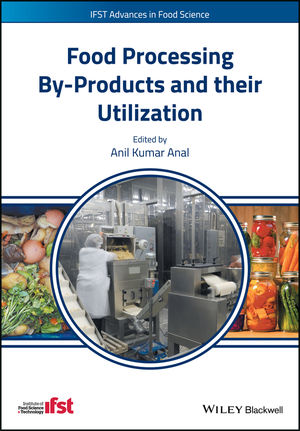Bring it on!
High-speed slicing technology suppliers can ‘make the cut’ to meet evolving customer demands for sliced meat products.
As the sliced luncheon-meat category evolves, so does high-speed slicing technology. But slicing technology companies have their work cut out for them. Trends they must address include an increasing amount of thinner-sliced products, a move to both smaller and larger package sizes, as well as an increase in whole-muscle and natural-appearing, sectioned-and-formed products, just to name a few.
Several years ago, one high-speed slicing company executive claimed the continuing move toward smaller packages of sliced luncheon meat would require slicing technology companies to build slicing machines that allow more throughput. And processors would ultimately need longer than 6-foot logs of product to get higher yields.
Some of his peers feel the challenge lies more in the packaging area.
“The old one- or one-and-a-half pound packages of bologna contained one-ounce slices. And then we had the four-by-six usually in one-ounce slices; that was a big category,” says Lee VandeWall, national sales manager, Weber North America, Kansa City, MO. “Today, we’re seeing smaller packages, and this means more packages.”
The trend toward thinner slices means more slices.
“If you now have to slice [the same sized] logs in half-ounce slices instead of one-ounce slices, it takes twice as many slices to get the same tonnage [as before] through the plant,” he adds. “The capacity doesn’t change from a slicing standpoint, it only changes from a packaging machinery standpoint.”
One major processor adds his thoughts on positioning packaging machinery.
“If processors set up their packaging lines the right way, they’re going to be very efficient and cost-conscious — no matter what speed the slicers are running,” says Ed Garrett, senior vice president of the West Liberty, IA-based Iowa Turkey Growers Cooperative (ITGC). “You must set your packaging lines up and your staffing down that line to match what the slicer can do.”
ITGC is the parent company of West Liberty Foods, Sigourney Foods, and Mount Pleasant Foods, which specializes in the production of high-volume, ready-to-eat products for foodservice, retail, and industrial customers. Its new Mount Pleasant Foods facility in Iowa is 55,000 square feet in size and houses 12 state-of-the-art slicing rooms. Plans are in the works to expand this facility by another 25,000 square feet and to add eight new slicing rooms.
At present, the facility processes 1 million pounds a week of Subway turkey products; various sandwich set-ups for Wal-Mart, including meat and cheese; and sliced turkey and ham for Denny’s.
Another insider addresses the move to smaller packages. If a
processor is considering offering smaller packages of sliced luncheon meat, it is going to have to look at what the volume is; how many hours of production will be required on a daily, weekly, monthly, and annual basis; and determine how they’re going to set their lines up, says Dave Brown, executive vice president, Formax® Inc., Mokena, IL.
processor is considering offering smaller packages of sliced luncheon meat, it is going to have to look at what the volume is; how many hours of production will be required on a daily, weekly, monthly, and annual basis; and determine how they’re going to set their lines up, says Dave Brown, executive vice president, Formax® Inc., Mokena, IL.
“If they want to fully automate the line, it’s possible the line in the current footprint might not be large enough to handle all of the additional automation,” he adds. “Further automation usually entails more equipment, which means you have a bigger footprint.”
Thin is ‘in’
Thinner slices offer fuller flavor and some claim even higher margins for processors. Hillshire Farm, Cincinnati, OH, introduced its Ultra-Thin Deli Select lunchmeats carved extra-thin —at .5 mm — in 2002, and this seemed to generate more industry interest in thinner slices. Since then, Tyson Shaved Deli Slices and Oscar Mayer Deli Shaved Cold Cuts, among others, have also entered the marketplace.
A different slice |
| Automated packaging systems are essential components for a wide range of sliced-meat applications. One new system is the automated Layer Packing System for small retail sausage patties and hamburger patties from Mechtronics International Inc. (MII), West Chester, PA, which incorporates Ross Industries’ 990 slicer. Due to increasing demand for smaller boxes of patties, this system fulfills the processor need for faster machinery to get the desired throughput. It can group, interleave, and stack fresh or frozen, sliced or IQF (individually quick-frozen) products. Applications include sausage patties, hamburgers, break steaks, frozen fish patties, pastries, and pizza. Features include:
“This machine doubled production for one major customer while reducing its labor force by six people,” says David Kent, MII vice president. Mechtronic’s Easy Makin’ Bacon vacuum packaging system satisfies consumer demand for portion control and convenience, and results in no mess, no greasy fingers, or stretched bacon slices. The package includes three bacon slices on a separator sheet, and portions are stacked seven layers high equaling 21 slices per pound. Stacked portions are vacuum- packed, preferably in a resealable bag and box, and a typical finished package size is 10-inches long by 5-inches wide by 5/8-inches high. “The slicer used is typically the Anco, onto which we install our portion control, and then use our paper interleaver and stacker for high-speed packaging,” Kent says. Mechtronics International Inc., phone (610) 431-3655, fax (610) 431-3774, or log on to www.mechtronicsinternational.com
|
“When you look at where this category is going, the challenge is not from the slicing side as much — it is getting [sliced products] into a packaging machine at very high speeds so processors can continue to get good throughput,” VandeWall says.
Scott Scriven, president and CEO of Weber North America, adds: “We’re also seeing a trend to larger, one-pound packages [in brands like Buddig and Land O Frost].”
Sam’s and Wal-Mart are driving the movement to larger 1-pound packages because they’re the big discounters offering products at the lowest price, Brown says.
Slicing technology providers say the bottleneck today in many high-speed slicing operations tends to be the packaging machinery. Formax® designs its slicing systems to be flexible and to fit a broad range of applications.
“We can run one-pound or two-ounce packages, and slice that product ranging from very thick to micro-thin,” Brown says. “So there’s tremendous flexibility in the base model of our FX180® product line.”
During the recent Worldwide Food Expo in Chicago, Formax® demonstrated this system at its booth, which included an FX180® Slicing and Autoloading system with the DS180 depositing system. Here’s how it works. The FX180® slices the product to the desired slice count and weight specifications. The sliced product is then conveyed to the FX180® autoloader, where it is staged for packaging. The DS180 then deposits the shaved, sliced meat into the pod packs.
Formax® also offers slicing and scanning technology for naturally shaped products.
“Our SNS® Scanning and Slicing system was designed for naturally shaved products — such as the belly, back bacon, and loins. We’re also slicing an air-dried ham product, which is very expensive and the shapes are not very consistent. We do an excellent job with those products.”
Weber features a lot of automation in loading packaging machines, and it offers almost 400 systems that autoload a form/fill/seal machine.
“We’re going to have to see more automation [loading into packaging machinery] because there’s no way people can be loading above, lets say, forty units a person if you’re trying to do two-hundred portions a minute,” VandeWall says. “The biggest challenge is handling all of the portions that are sliced and autoloading them into the packaging machine.”
Expect to see more thinly-sliced meats packaged in gas-flushed packages, he adds.
Weber’s newest slicing technology is its 902/903 slicer for processors who require 2,000 slices a minute. A touch screen allows every change desired in two screens or less, it aids operator efficiency with the use of pictograms, and it displays real-time slice information.
The Model 902/903 is available in three operating options: manual, semi-automatic, or fully automatic. Up to 14 presentation styles can be produced on a 902/903, and accessories are available to increase this slicer’s capabilities. Every component of this slicer is ground or polished stainless steel using the highest hygienic standards. Weber will introduce its newest slicer, the 904, in May during the IFFA show in Frankfurt, Germany.
Scriven points out that luncheon meat is becoming more upscale, which in many cases means more whole-muscle products. Thanks to vision systems on Weber slicers for such applications, the end result is very accurate weights, on-weight portions, and very high yields. However, throughput is slower because natural meats are shorter in length requiring more changeover in the slicer.
Regardless of how sliced-meat demand changes or evolves in the future, technology providers say they plan to stay one cut ahead of the competition by offering equipment and services to meet any need. NP
Technology suppliers participating in this article include:
- Formax Inc., phone ((708) 479-3500, fax (708) 479-3598, e-mail dbrown@formaxinc.com, or log on to www.formaxinc.com
- Weber North America, phone (816) 891-0072 or (800) 505-9591, fax (816) 891-0074, e-mail usasales@weber-inc.com, or log on to www.weberslicer.com


